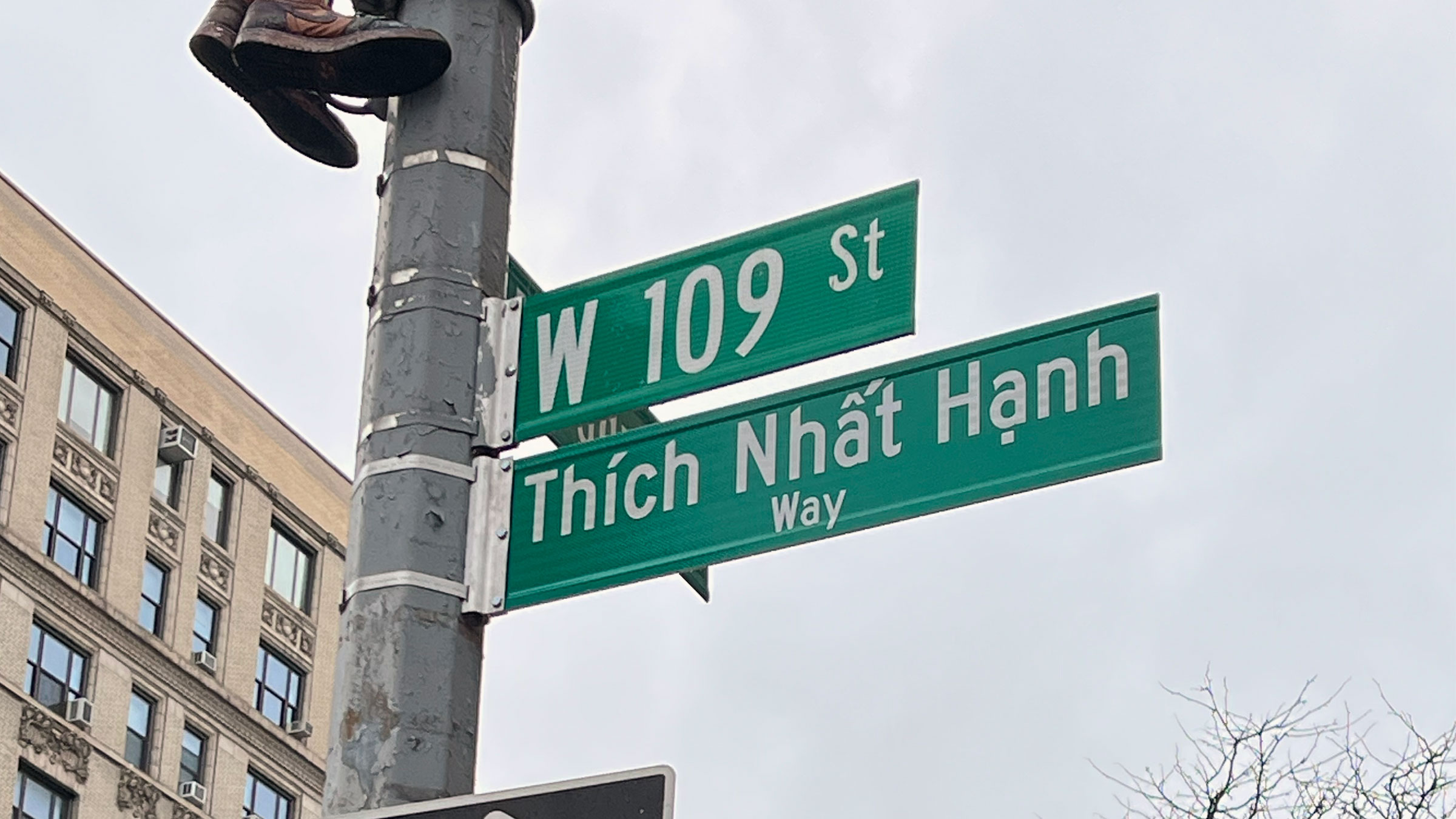In an historic ceremony held on April 11, the City of New York officially co-named a stretch of West 109th Street between Riverside Drive and Broadway as “Thich Nhat Hanh Way” in honor the late Vietnamese Zen teacher and his enduring legacy in the fields of mindfulness, peace, and social justice.
The event, jointly organized by the New York City Council, the Thich Nhat Hanh Foundation, and the Plum Village Community of Engaged Buddhism, brought together city leaders, Buddhist monastics from Blue Cliff and Deer Park Monasteries, and a large crowd of members of the public to commemorate the life and teachings of one of the world’s most influential spiritual figures.
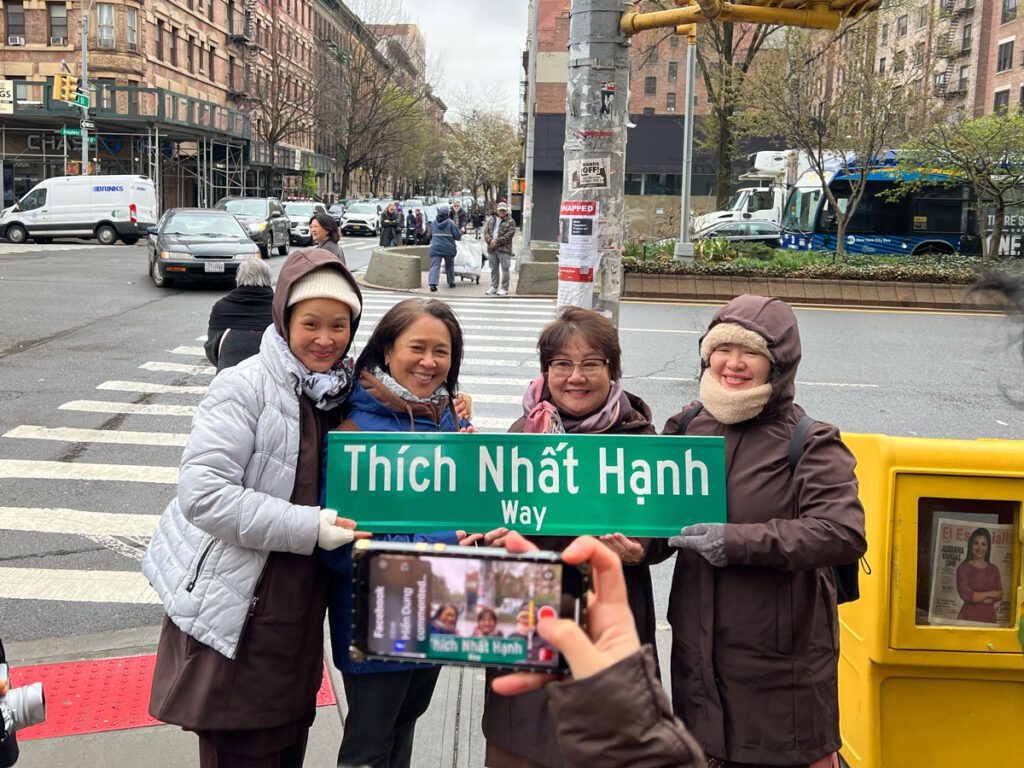
Thich Nhat Hanh lived at 306 West 109th Street from 1962 to 1963 while studying and teaching at Union Theological Seminary (UTS) and Columbia University. This period marked a formative chapter in his life as a young scholar, teacher, and activist.
The street co-naming takes on added historical resonance as it coincides closely with the 50th anniversary of the end of the Vietnam War — a conflict during which Thich Nhat Hanh, born in Vietnam in 1926 and affectionately known as “Thay” by his students, was exiled for his outspoken advocacy for peace and reconciliation.
His efforts to end the violence led Dr. Martin Luther King Jr. to nominate him for the Nobel Peace Prize in 1967, calling him “an Apostle of peace and nonviolence.” Over the decades, his teachings and writings on mindfulness and compassion have reached millions around the world, earning him recognition as “The Father of Mindfulness.”
Following the unveiling of the “Thich Nhat Hanh Way” sign, attendees took part in a silent walking meditation through a light spring rain, moving from 109th Street to UTS and retracing part of Thich Nhat Hanh’s historic path through the city. Before the walk began, Brother Phap Tuyen invited participants to move patiently and mindfully, allowing breath and footsteps fall into quiet harmony.
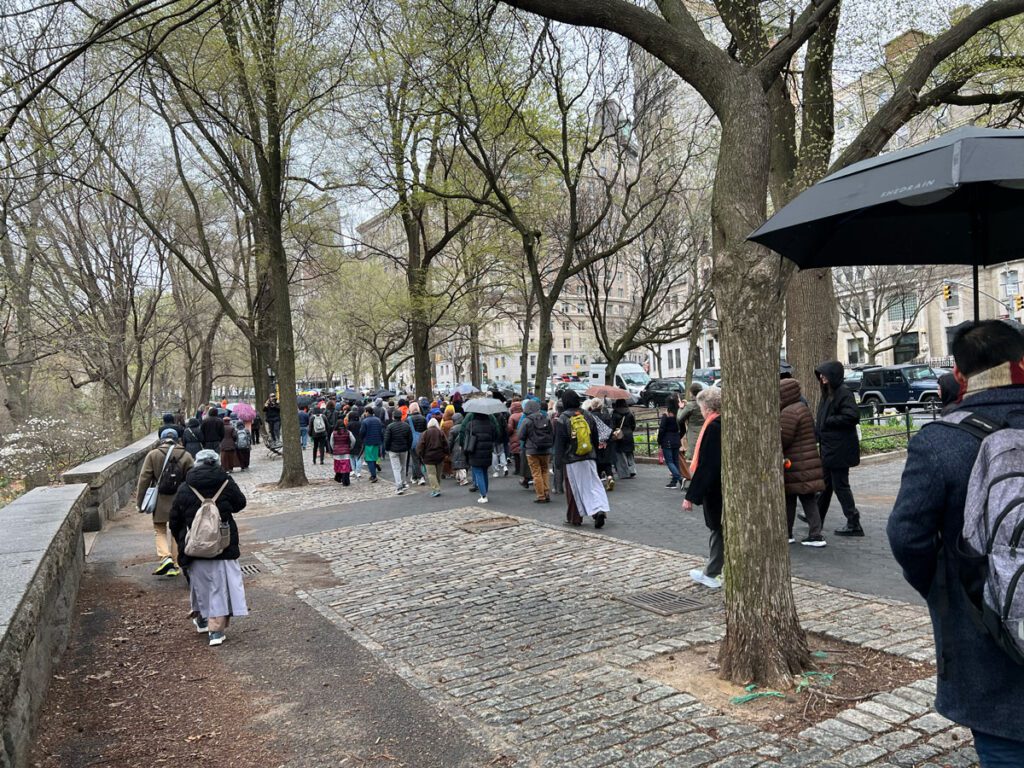
Upon arriving at UTS, people first crowded into the Burke Library to witness an elegantly curated exhibition of Thich Nhat Hanh’s calligraphy, writings, and archival materials from his time at Columbia. It was a moving tribute, inviting reflection on how far the young Thay (born Nguyen Xuan Bao) had journeyed—from a small village in central Vietnam to becoming one of the world’s most beloved spiritual teachers.
Shortly after, vegan Banh Mi — Vietnamese baguette sandwiches — were offered for a communal mindful eating practice in James Chapel. Before the meal began, Brother Phap Xa from the European Institute of Applied Buddhism invited participants to enjoy their food silently, encouraging slow eating with deep awareness and appreciation of the many factors—sunlight, rain, soil, and human care—that led to the meal. After lunch, Sister Hoa Nghiem introduced a chant by the monastics invoking Avalokiteshvara, the bodhisattva of compassion, in support of those suffering from war, natural disasters, injustice, and oppression.
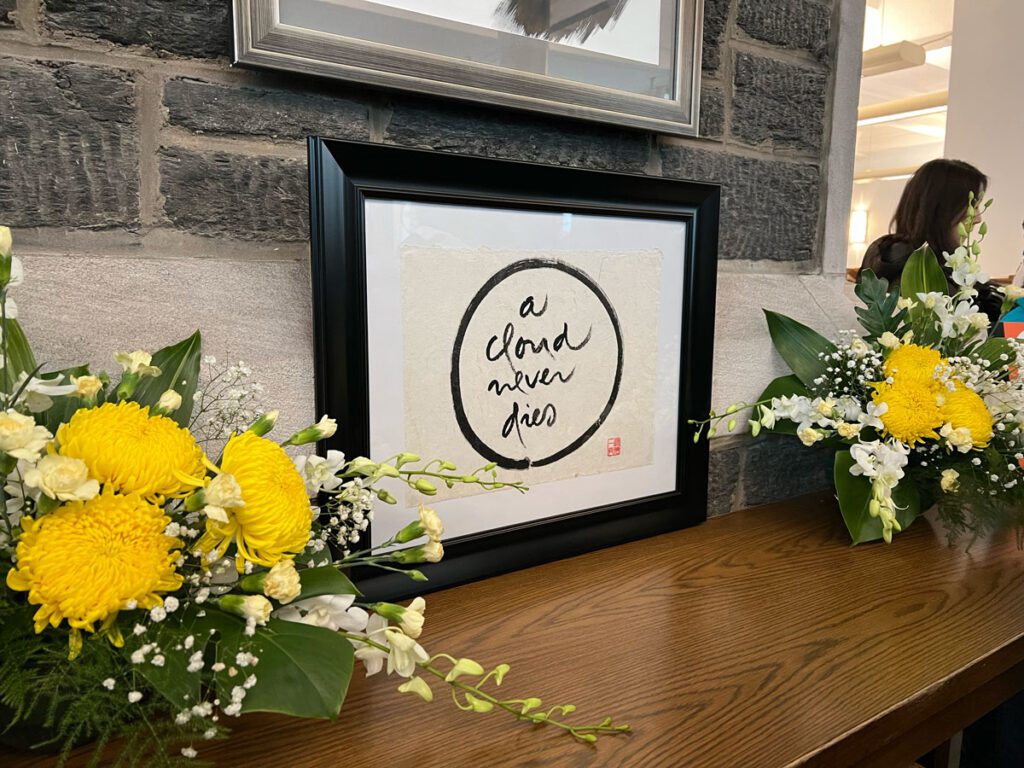
The chanting was followed by several speakers: Dr. Su Yon Pak (Dean of UTS), Reverend Kosen Greg Snyder (Senior Director of Buddhist Studies at UTS), and monastics Brother Phap Luu and Sister The Nghiem. Brother Phap Luu shared a little-known story of how Thay once considered self-immolation in New York City to protest the Vietnam War—a testament to his moral courage and beliefs, though he ultimately chose another path. Meanwhile, Sister The Nghiem emphasized that Thay viewed ethical conduct as a lived practice essential to creating a mindful, compassionate society. The message felt particularly resonant and essential amid unrest on Columbia’s campus and rising global tensions—a reminder that the work of peace is ongoing.
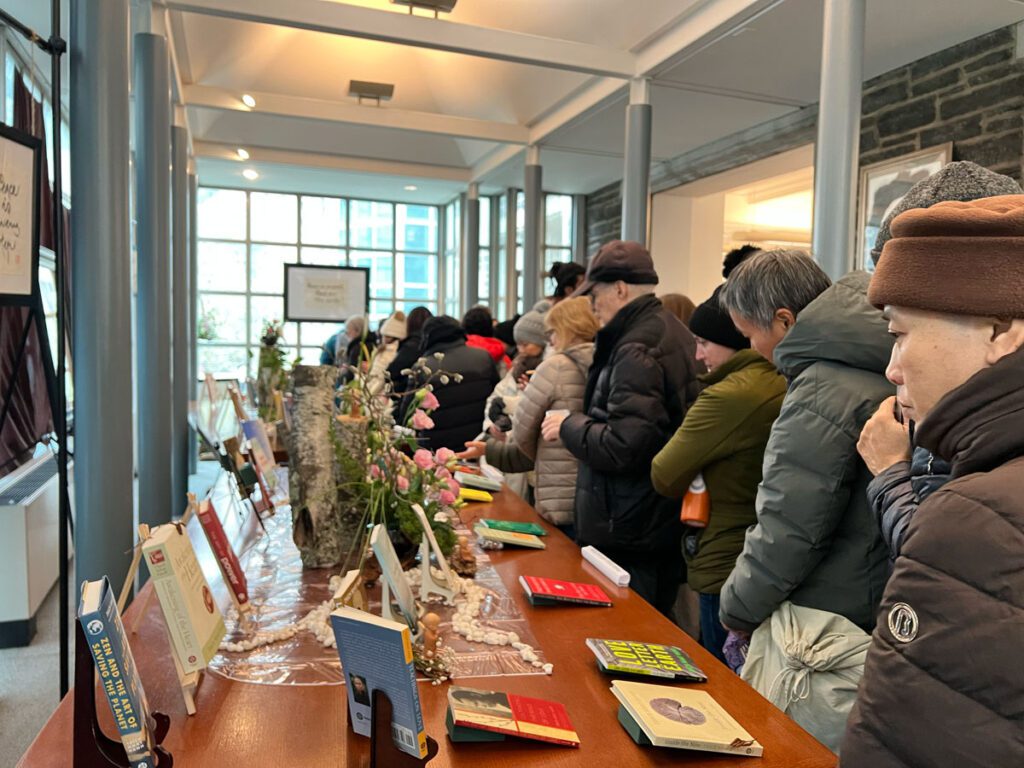
The event wrapped up with Brother Phap Khong offering tokens of appreciation, followed by a meditation led by Sister Than Nghiem, and both a reading and musical rendition of Thay’s poem “Please Call Me by My True Names.” While a monastic chorus concluded the ceremony by 4 p.m., the spirit of the gathering lingered. Organizers emphasized that the newly named street serves as both a physical and symbolic reminder of the possibility of peace in the heart of New York City. The co-naming of “Thich Nhat Hanh Way” is not only a tribute to his remarkable legacy, but also an invitation to embody mindfulness and compassion in daily life.
“These spaces are not just simple signs. They’re ritual spaces. They don’t just carry a name; they carry a life. They carry a way of being,” Rev. Snyder noted during his remarks. “And when we pass them, they will inspire that in us.”
